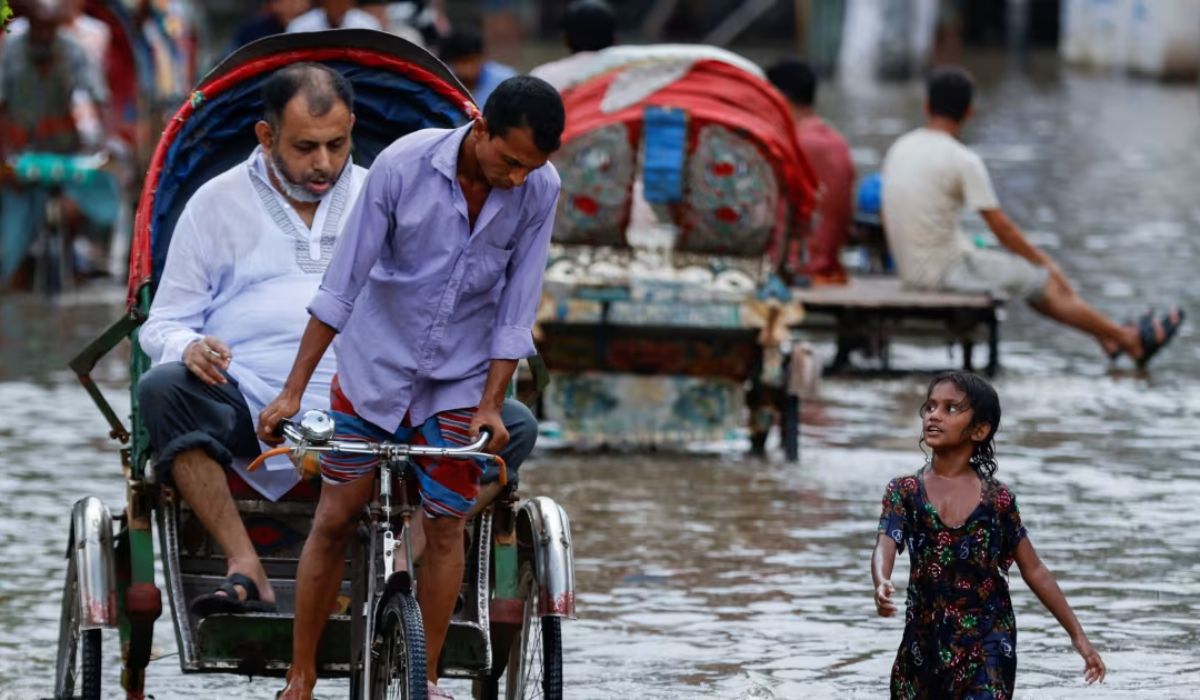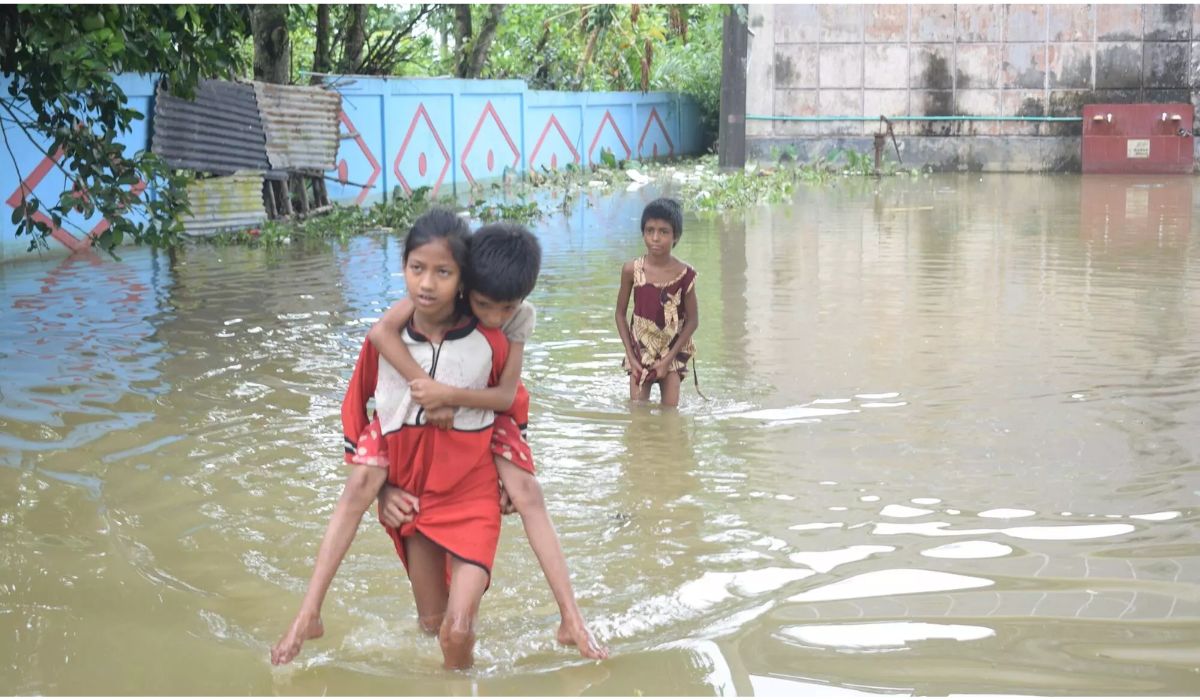Following weeks of intense rains that swamped houses and destroyed crops, extensive flooding has left over 1.8 million people trapped in northeast Bangladesh, according to relief organizations and state media.
The second wave of flooding to hit the region in less than a month has left huge swathes of Sylhet city and the adjoining town of Sunamganj waterlogged, according to video released on Saturday by the state-run news agency Bangladesh Sangbad Sangstha (BSS).
According to local media, the Water Development Board claimed last week that the extensive flooding was caused by extended periods of intense rain and water runoff from the hilly areas upstream on the border with India, which caused four rivers to rise past their danger lines.
Residents in the low-lying parts of Sylhet that were most severely affected were observed wading through water up to their chests and piling their possessions into mounds to shield them from the murky waters.
According to local media, there is worry for individuals stranded by flooding who now face food shortages and a lack of clean water.

According to BSS, the flooding had affected about 964,000 people in Sylhet and 792,000 in Sunamganj. The authorities claimed to have opened over 6,000 shelters to assist the displaced.
The United Nations Children’s Fund (UNICEF) said on Friday that 772,000 of them were children in immediate need of relief. 500 more schools were utilized as flood shelters after more than 800 had been inundated, according to the government.
UNICEF Representative to Bangladesh Sheldon Yett said in a statement that “children are the most vulnerable as waters rise, facing heightened risks of drowning, malnutrition, deadly waterborne diseases, the trauma of displacement, and potential abuse in overcrowded shelters.”
Bangladesh, a low-lying, densely populated country, is vulnerable to cyclones, flooding, and periodic rains.
However, research indicates that the South Asian nation is among the most exposed to the effects of the climate catastrophe brought on by human activity. The climate issue will cause extreme weather events to become more common and intense, which will worsen Bangladesh’s economic and humanitarian effects.
According to the World Bank, 13 million Bangladeshis may become climate migrants by 2050, and catastrophic flooding may result in a 9% decline in the country’s GDP.
The area had just begun to recover from severe flooding in late May as a result of Tropical Cyclone Remal, which devastated Bangladesh and southern India and affected over 5 million people. This latest round of heavy rains and flooding coincided with that.
“This will alter many people’s lives, displacing their homes and schools and putting them in temporary shelters for an indeterminate amount of time,” stated Sultana Begum, the regional humanitarian advocacy and policy manager for Asia for Save the Children, in a statement.
“Everything we’re hearing suggests that these extreme weather events will only get worse.” Furthermore, there has never before been two instances of catastrophic floods that occurred so quickly after one another. Without a doubt, Bangladesh and India are already feeling the effects of the climate emergency, which is depriving children of their families, homes, food, and access to healthcare and education.

Rohingya at risk
In southern Bangladesh, where a million or so Rohingya Muslims live in the largest refugee camps in the world after fleeing violence and persecution in neighboring Myanmar, monsoon rains have also caused landslides.
Bangladesh’s Ministry of Disaster Management and Relief said that at least ten people, including three children, perished in the refugee camps close to Cox’s Bazar on Wednesday as a result of mudslides and intense rains.
Hasan Sarwar, the chief of the ministry’s refugee cell, told CNN last week that “people have been evacuated from the low-lying areas and at least 500 people have been shifted to other relief centers.”
Numerous Rohingya migrants reside in tarpaulin and bamboo shelters situated on steep hillsides that are susceptible to landslides, torrential rain, and severe winds.
Over 1,000 shelters have been destroyed or damaged by the severe downpours, which have affected about 8,000 people in 33 camps, according to Save the Children.
The humanitarian organization pointed out that Bangladesh’s monsoon season, which is expected to bring more intense rains, landslides, and flooding, has only recently begun and will continue for the next two months.
Over 4 million people have been affected by landslides, flooding, and torrential rains in the nearby Indian state of Assam, according to Save the Children.
Local police and disaster management officials report that since May 29, at least 31 people have perished in the state’s floods and landslides.
However, there appears to be some immediate relief for northeast Bangladesh, as local media reported that the rains started to lessen and there were indications that the floodwaters were beginning to retreat.
The main rivers in the northeast are experiencing a decline in water levels, according to the Bangladesh Water Development Board on Saturday. If the current rainy spell holds, this trend may continue in the days ahead.
“Overall improvement of the flood situation may continue in the next 72 hours in various low-lying areas under districts of the northeastern part of the country,” the statement stated.

